Follow the Leaders
How to Be a Better CEO in 2021
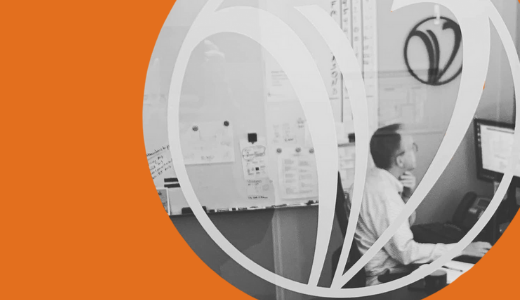
Last year at this time, I asked the members in my peer roundtable “What are your professional development plans for next year?” I was shocked when two of these CEOs said that they had done all that stuff, that they were within 5 years of exiting, and that they really didn’t see a need for it. It seemed like they had decided to just coast to the finish line of their careers.
Maybe when I am closer to retirement, I will have that attitude, but I hope not. I believe that there is unlimited potential for growth, and that if I am to be the leader my organization needs and deserves, I need to work on myself continually.
I think I am a pretty good CEO. So, what’s wrong with being the same kind of CEO again next year? Well, are my competitors sitting still or getting better? Is the pace of change in business and society slowing down? I don’t think so. If I am to lead my business to compete and thrive amidst rapid change and the unexpected (pandemic, anyone?) I must continue to learn and grow.
So I encourage you, my fellow CEOs, to make a decision about how you will grow as a leader in 2021. The options are endless. You could take a class, join a book club, retain a coach, or join a peer roundtable.
Be a better CEO in 2021. Make a decision now on how you will learn and grow.
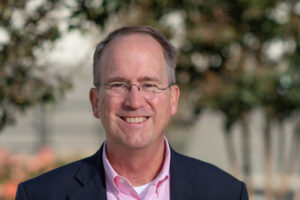
About the Author
Scot McRoberts is the executive director of the VA Council of CEOs (VACEOs). One of the original co-founders, he has led the organization’s growth from 20 members in 2000 to more than 200 today. Utilizing a best practice model for the Council’s CEO roundtables and a dogged focus on its core purpose of connecting CEOs for the purpose of sharing experiences, McRoberts has developed an association that boasts 90% retention. Before coming to VACEOs, Scot was a senior executive at the Greater Richmond Chamber of Commerce, where he led business councils, small business programs, and business retention efforts.
Do You Need a Leadership Coach?

HINT: THE ANSWER IS MOST LIKELY – YES!
As leaders, we know the value in pushing ourselves and others to our full potential. Do the leaders in your organization expand the potential of your team? One of the most effective tools to unleashing potential of an individual or an organization is by bringing in a coach. Think about it, athletes at the pinnacle of their careers have coaches. Olympians, professional football and basketball players, even master chess players have at least one (and usually more than one) coach. Some baseball coaches focus on pitching, others on hitting but each is helping unleash the full potential of the players with whom they are working.
Why then do so many business leaders chafe at the idea of having a coach? The rules of sports and games are relatively stagnant: the batter swings and misses, it is a strike; the ball goes in the net, it is a score. However, the principles of leadership evolve, and the expectations can change overnight. One might argue that leaders need coaches far more than their athletic counterparts. With the global pandemic, political polarization, and social justice movements, 2020 stretched even the most seasoned leader. A fast pitch is still a fast pitch, but leaders are dealing with curve balls every day.
Engaging with a coach expands our self-awareness which is the critical first step in conducting any kind of behavior change. Additionally, it establishes an accountability model by which we as leaders can reflect on our progress and push ourselves further.
BUT JUST IN CASE YOU ARE STILL SKEPTICAL, HERE ARE A FEW SIGNS YOU NEED A COACH
PRODUCTIVITY:
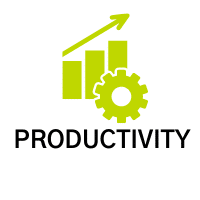
- Are you getting the most from your team?
- Have your business goals stagnated?
- Do you and employees dream back to the “good old days” when work was more fun and exciting?
Leaders need to evolve and meet the demands of their business, customers, and employees. To do that, you need highly engaged employees because engaged employees put in extra discretionary effort. It is the extra effort that can boost your sales, revenue, and production goals. Think about what your business could look like if everyone gave 110%. Ever hear that people leave managers not companies? It’s true. With that in mind, you may need to reassess your leadership style and approach to increase the productivity of your team and therefore the organization. But how do you change your style? How do you know which part of your leadership style to adapt to yield the greatest results? A coach can help you.
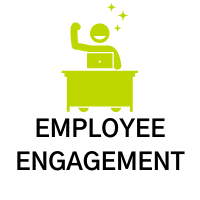
EMPLOYEE ENGAGEMENT:
- Have you received employee feedback that you do not know what to do with or have trouble prioritizing?
- When was the last time you assessed your employee’s level of engagement and commitment to the organization?
Most organizations only do so once a year when they conduct an employee satisfaction survey. Not enough of those organizations actually do anything with the results. This is a missed opportunity to take feedback directly from your employees, acknowledge that feedback in a meaningful way and take visible steps to address it. I often find that leaders either do not know what to do or they try some different approaches in the short term, but they do not last. Coaches can help you critically evaluate root causes and forge successful strategies to address them.
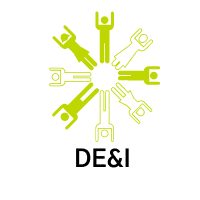 DIVERSITY, EQUITY & INCLUSION:
DIVERSITY, EQUITY & INCLUSION:
- Do you have DE&I goals but do not know how to meet them?
- Are you able to acquire diverse talent but not able to retain them?
- Do you know why?
DE&I has been an increasingly hot topic for leaders, but few know what to do beyond focusing on talent acquisition efforts and conducting an equity compensation review. How does one build an inclusive culture within an organization? How does one lead with inclusivity? Those are tough questions and answers will vary based on an individual’s leadership style and an organization’s culture. A coach can provide objective perspective, accountability, and facilitate sensitive conversations to leading to real DE&I results.
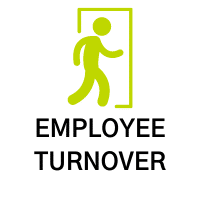
EMPLOYEE TURNOVER:
- Do you see trends in employee turnover?
- Do you have a hard time retaining female employees?
- Do you know why?
We all know that the costs of employee turnover are high and far beyond the recruitment spend. The opportunity cost and the loss of institutional knowledge can wreak havoc on an organization. Digging into why your employees are leaving and what you can do to retain them will save you great time, money, and energy.
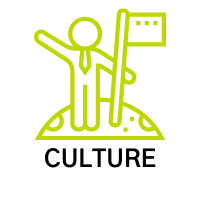
CULTURE:
- Are your leaders living your organizational values and culture individually and collectively?
- What would it take to get them there?
Yes, a coach can help you enrich your culture. Leveraging assessment tools and facilitating meaningful dialogue across your leadership team can unearth biases, misperceptions, and behaviors that are keeping your team from modeling the culture you want for your organization.
Some great business leaders have leveraged the benefits of coaching. Erick Schmidt, Steve Jobs, and Bill Gates are examples of successful leaders who have used coaches as part of their journey. Perhaps we all could be open to a coach to help us navigate the curve balls of 2021 and beyond.
To learn more about finding the right coach for you, please join us for The Coaching Continuum- Finding the Right Coach For You– February 16th 12pm EST. This free webinar will introduce you to different types of coaches and help you identify how to find the right coach for your organization.
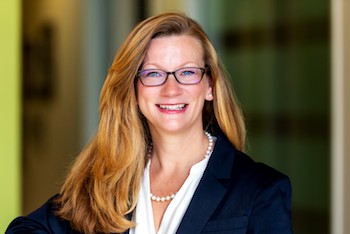 ABOUT THE AUTHOR
ABOUT THE AUTHOR
As Fahrenheit’s Human Capital Management Practice Area Lead, Sara Shelton brings a passion for organizational performance and creating great places to work. She enables clients to achieve their business goals by aligning and maximizing their talent, leadership, and culture. She influences with integrity and credibility, treasuring her role as consultant, advisor, and trusted confidante.
EDITOR’S NOTE: Image and content provided by Fahrenheit Advisors. Fahrenheit Advisors is a Sponsor of Virginia Council of CEOs. This post was originally posted here.
Don’t Get Caught Off Guard (Again)
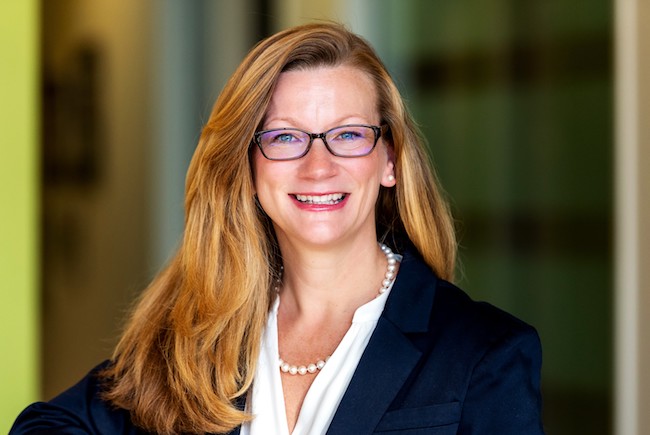
Although none of us anticipated the challenges 2020 would bring, we can learn from this time and be better prepared for the next unforeseen challenge. As business leaders, we talk a lot about risk management and risk planning. But how much time have we devoted to planning for risk rather than just fighting the fires as they appear? People are our greatest asset and our highest potential for risk, and yet how often do we sit down to intentionally create a People Strategy?
As you know, the state of Virginia required all businesses to complete their Infectious Disease Preparedness and Response plans back in September. While created out of the current pandemic, the template itself is simple and resembles typical risk plans created in the past. We can use this approach to create a People Operations Risk Management Plan that can be reused in many situations and updated over time. This is a great use of current unplanned downtime.
We can use Maslow’s Hierarchy of Needs as a guide to ensure that not only do we address each needed component but that we prioritize our efforts in the most impactful way by working our way up from the bottom.
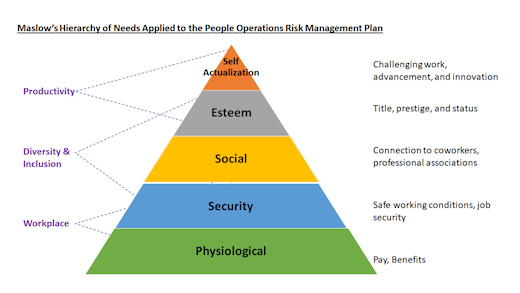
What could a People Operations Risk Management Plan look like?
- Workplace Environment: Based on your business type, what roles need to be onsite? What roles can have location flexibility? What has been the impact on productivity and culture? Could you consider flexible work options for some roles going forward? What could increased flexibility mean for your employee recruiting and retention? Note there are many more options than everyone in the office or everyone can work remotely. Think of the decision here as a dimmer switch instead of just and on/off switch.
- Productivity: How are you measuring productivity for all your employees? Did you uncover roles that did not have specific productivity measures before 2020? How will you address that gap in the future? How might you adjust your goal setting and performance processes? Being intentional here enables us not to equate physical presence with productivity for all roles and to be more transparent with employees regarding our expectations.
- Diversity & Inclusion: Do you have an employee mix with different areas of expertise and experience that can help you innovate and move your company to the next level? How are you accounting for the multi-generational workforce? How are you adapting your recruiting processes to ensure you have the right talent not just today but for the future? Diversity is a journey for individuals and for organizations. Creating a plan that moves your organization along in its journey will be unique to your organization.
There is no silver bullet to the questions above. The “right” answers will depend on the type of business you are in, your growth strategy, and the desired company culture. These factors can be weighted as part of a Risk Matrix within your People Operations Risk Management Plan. What is important now is to take time to think through your people risk and the options available to you.
We cannot control when the “new normal” will begin (and perhaps we are already in it) but we can deliberately make plans for our businesses based on what we have learned this year about our consumers, our employees, and ourselves.

About Sara Shelton
Sara, a new addition to the Fahrenheit Advisors team, leads Fahrenheit Advisor’s Human Capital Management Practice. She began her career in management consulting supporting technology, financial services, and healthcare companies through mergers, acquisitions, and other large-scale transformational initiatives. She brings a passion for organizational performance and creating great places to work. Need help creating your People Operations Risk Management Plan? Sara can be reached at sshelton@fahrenheitadvisors.com.
EDITOR’S NOTE: Image and content provided by Fahrenheit Advisors. Fahrenheit Advisors is a Sponsor of Virginia Council of CEOs.
My Man-Crush on Galloway
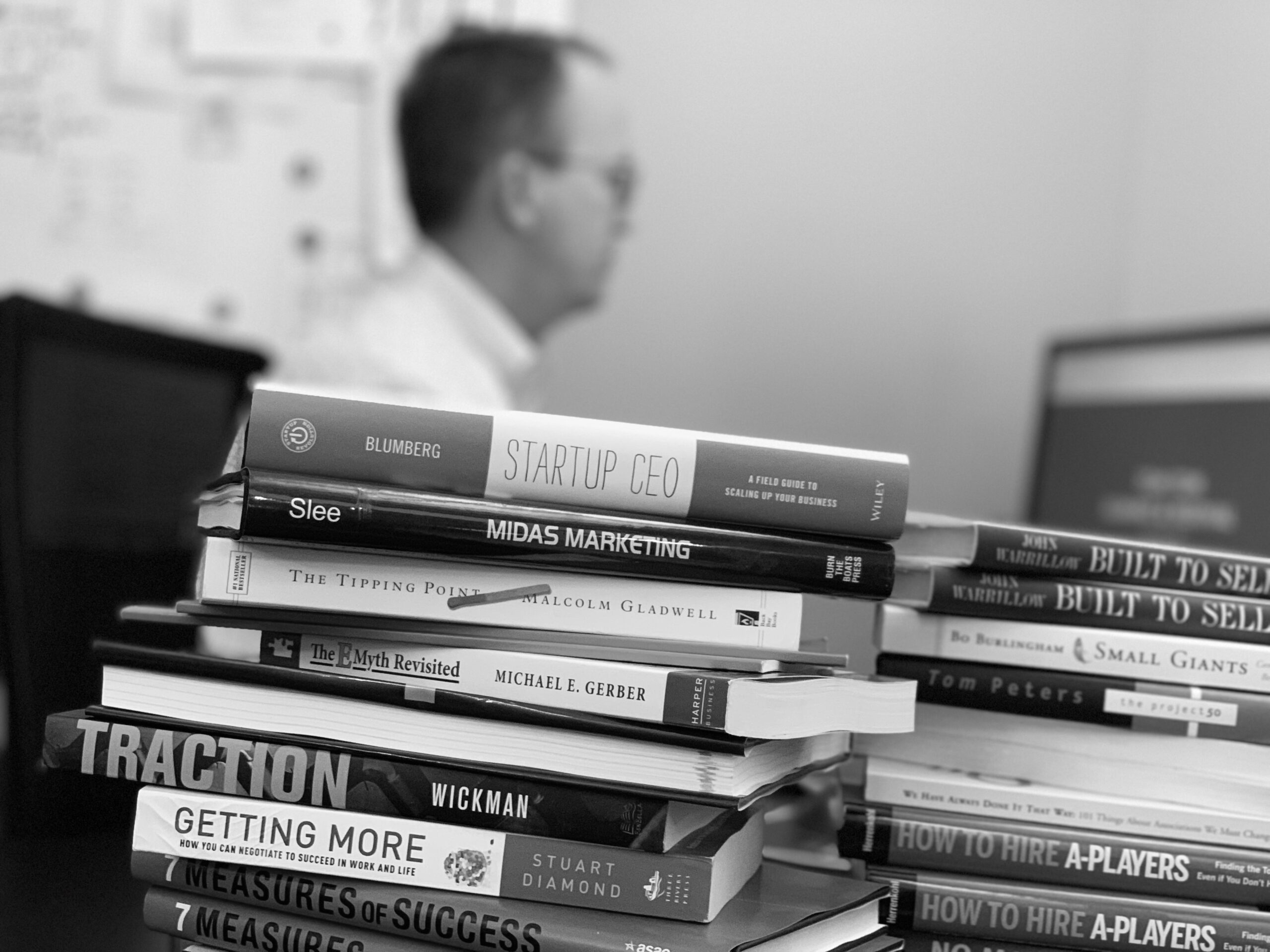
I consume a ton of business content. You probably do too. Occasionally I run across something so compelling that I need to share it.
Scott Galloway is a professor of marketing at NYU Stern School of Business, but before that built businesses in e-commerce and data intelligence. He is about my age and was also born in November, so I thought he would like me. I reached out to him last year to try and get him on the VACEOs stage for you. So far, no luck. He’s in high demand.
Neverthless, I am attracted to disrupters, and Galloway is a prince in that kingdom. In a smart way.
My friend Verne Harnish got Professor Galloway to speak at a recent online Scaling Up Summit, and Verne was generous enough to share @profgalloway’s 12-minute, 60-slide thrill-ride of a talk with readers of his newsletter (you should subscribe to it).
HERE’S the compelling part! Take 12 minutes to watch Scott Galloway’s talk RIGHT HERE. I guarantee it will stir something inside you – hope, imagination, greed, cursing, fear, wonder. It will be worth it. Let me know if not. Just take it easy on the expletives.
Forward!

Scot McRoberts, Executive Director, VACEOs
About the Author
Scot McRoberts is the executive director of the VA Council of CEOs (VACEOs). One of the original co-founders, he has led the organization’s growth from 20 members in 2000 to more than 200 today. Utilizing a best practice model for the Council’s CEO roundtables and a dogged focus on its core purpose of connecting CEOs for the purpose of sharing experiences, McRoberts has developed an association that boasts 90% retention. Before coming to VACEOs, Scot was a senior executive at the Greater Richmond Chamber of Commerce, where he led business councils, small business programs, and business retention efforts.
COVID-19 Response: Panel of CEOs Explain What’s Changed for Good
 Mark Smith, Owner, Midas of Richmond
Mark Smith, Owner, Midas of Richmond
“It could’ve been very easy to say, ‘Hunker down, cover yourself, and let’s survive this,’” says Mark Smith of Midas of Richmond when asked about his business mindset at the beginning of the COVID-19 crisis. “I just chose to take the opposite route.”
“I just went in as upbeat. It’s a positive. ‘Yeah, this is not ideal, but there are going to be things that are going to capture market share. It’s an unfortunate way to look at this, but there are going to be people who survive this and there are going to be some who won’t. We’re going to turn it up even harder.’”
So Mark Smith bet big.
“We’ve always gone in kind of expecting success. Well, now we expect success just a little bit more.” – Mark Smith, Midas of Richmond
Smith ramped up his monthly marketing budget by more than 35%, added another TV station to his broadcast media strategy, doubled his radio spots, and hired Red Orange Studios, a Richmond, VA ad agency, to build a robust “More to Your Door” campaign – one he intends to invest in significantly.
“So the big thing that changed for me was my mindset,” Smith explains. “We’ve always gone in kind of expecting success. Well, now we expect success just a little bit more. We’re going to go full out. We’re going to capture market share. We’re going to hire folks. We’re going to grab what we can. We’re going to do it proactively, we’re going to do it aggressively, and we’re going to do it unapologetically.”
WHAT’S CHANGED FOR GOOD
A new “Go Big” mindset
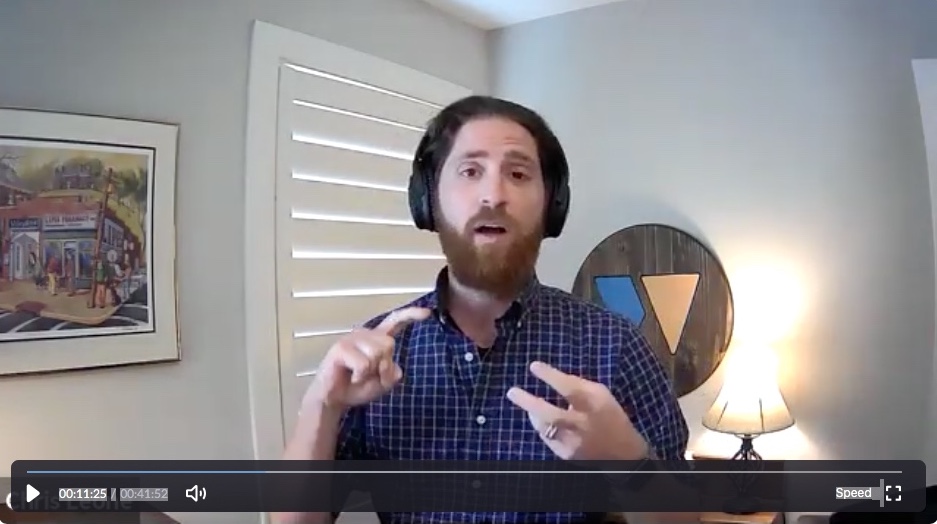
Chris Leone, CEO, WebStrategies
How was Chris Leone of WebStrategies feeling in the early stages of COVID-19? “I think maybe some of us kind of knew that this was not going to be a short-term thing,” he says. One of his biggest concerns for his digital marketing firm was figuring out how to approach customers when selling their services.
“It went from, ‘Um, yeah, sure – I’ll meet with you’ or ‘Now’s not a great time,’ to ‘How dare you try to call me right now?’ I mean, if you’re in sales or know people in sales, the responses we were getting were just vicious. The whole sales community is wondering, ‘How the heck do we behave right now through all of this?’”
Leone chose to focus on what he could control.
“We decided to create as much value as possible for our marketplace in the form of content and be as loud as we possibly could.” – Chris Leone, WebStrategies
“I can’t control what people are willing to give to me – their time, a meeting, a signed contract – but I can 100% control what I’m willing to give to them. So with that, our sales and marketing strategies shifted. We decided to create as much value as possible for our marketplace in the form of content and be as loud as we possibly could.”
Leone hired an additional marketing person, invested more in the content of his webinars, and tripled the amount of content on his website. Instead of asking for meetings, his salespeople offered free content – and the company has seen its first-meetings rate increase by 117% compared to last year.
What changed for good? Leone has learned to ask himself, “When the behavior of the marketplace changes quickly and dramatically, how can we adapt? So we remain focused on the things we can control instead of wishing for things to go back to how they were. We’re driving home the importance of being seen as a trusted authority in our space. [The pandemic] forced us to find new ways to do that, and we’re going to be able to carry that forward into the future.”
WHAT’S CHANGED FOR GOOD
Adaptability and focus on the controllable
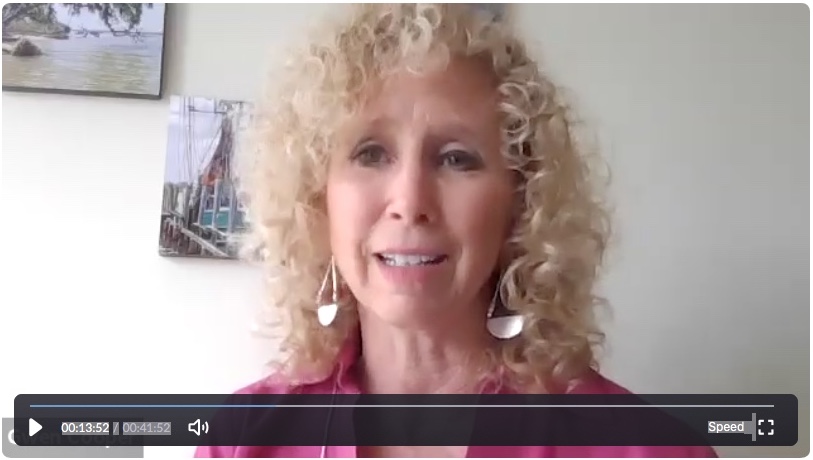
Gwen Cooper, CEO, Patient Services, Inc.
Gwen Cooper, CEO, Patient Services, Inc. (PSI), was hired as the company’s new CEO on June 1, smack in the middle of the pandemic. To say she’s had a challenging first few months on the job is an understatement.
“We are the oldest patient assistance program in the country headquartered in Virginia. Our nurses, doctors, outreach managers and government affairs teams were working around the clock to make sure all our patients had every opportunity to get the care they needed…in their homes.”
In her new role it was imperative that she quickly understood the “before COVID” work habits versus the “current state” work habit to determine how well it was working for her new team of 50. “[Moving staff remotely] gave us an opportunity to really look at our staffing needs, contracts and benefits to help us understand where we could streamline our expenses. Especially when it became clear we weren’t coming back anytime soon.“
“We’re not coming back to the office. We’re going to have a permanent flexible work schedule and work out what our remote working looks like.” – Gwen Cooper, Patient Services, Inc.
The great news is that productivity has actually increased, Cooper reports.
“What’s changing for us at PSI is that we’re not coming back to the office. We’re going to have a permanent flexible work schedule and work out what out remote working looks like,” she says. Making that work now includes keeping an eye on staff members’ “emotional bank accounts” since she knows they’re missing day-to-day interactions with each other.
WHAT’S CHANGED FOR GOOD
Operational efficiencies and a shift to a remote work model
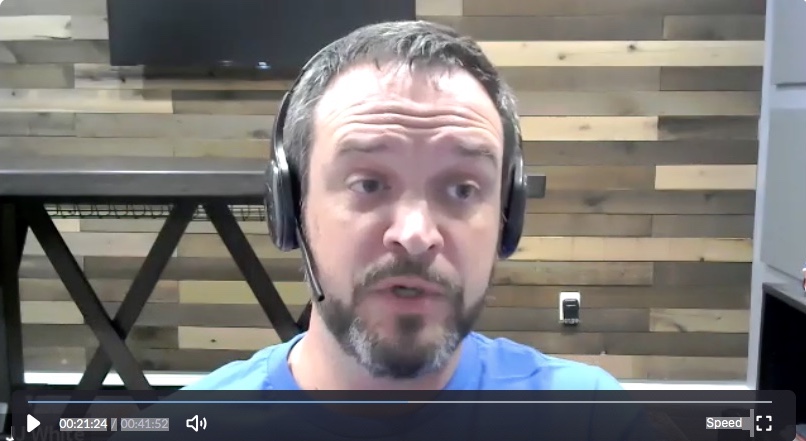
JJ White, CEO/Franchise Owner, Dale Carnegie
JJ White, Dale Carnegie CEO/Franchise Owner, is arguably the most affected by COVID-19 of our panel. “I’ve been a multi-unit franchise owner for Dale Carnegie Training for 20 years,” White explains. “Ninety-nine percent of what we’ve always done is bringing groups together in a room for transformational learning programs, bringing permanent behavior changes and soft skills, leadership, communication – things of that nature. When we started our week on March 16th, 99% of what we do ended.”
One percent of White’s business was not affected because Dale Carnegie was, at the time, one of the largest companies in the world delivering virtual instructor-led training. “So immediately, in one day, 1% of my business became 100% percent, but the sales weren’t there to compensate.”
In July, White – and the 108-year-old institution of Dale Carnegie – had to come to grips with the fact that it was time to completely reinvent how they went to market. Everything was evaluated, and nothing was so sacred that it couldn’t be changed.
“We took our core strengths and applied them in completely different ways,” says White. “We started to shift our entire operational model to a completely different deliverable. We helped existing clients acclimate to our new offer, and we found new clients and markets. The biggest change we made was to tear down the geographical boundaries of my regional sales team.”
“The biggest thing this crisis did for us was it solved so many constraints that we had in our business for years.” – JJ White, CEO/Franchise Owner, Dale Carnegie.
In a weird twist of fate, the pandemic could be seen as one of the best things that’s ever happened to his business. “The biggest thing that this crisis did for us was it solved so many constraints that we had in our business for years, especially being a global franchise network. We didn’t need a certain mass in a certain geographical area anymore. Everything is virtual and dispersed. It’s really enabled us to tear down walls that we should have torn down years ago, but didn’t have the courage to.”
White reports that sales are up, and he has confidence that his business will be OK.
CHANGED FOR GOOD
No more artificial boundaries or constraints
How has your business changed for good? Please share with us by leaving a comment.
Virginia Council of CEOs is a nonprofit dedicated to bringing CEOs of small and mid-sized businesses together to share experiences and to learn and grow with each other through peer roundtable groups and learning events. Learn more.
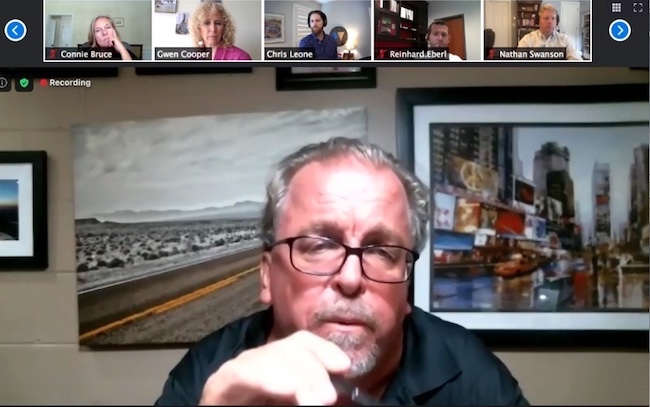 Mark Smith, Owner, Midas of Richmond
Mark Smith, Owner, Midas of Richmond
Recent Comments